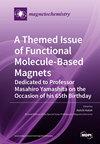利用软磁材料增强磁性能量收集减振器的能量回收
IF 2.5
4区 化学
Q2 CHEMISTRY, INORGANIC & NUCLEAR
引用次数: 0
摘要
在汽车行业,能量回收和可持续性变得越来越重要,能量收集悬架系统(EHSA)在提高车辆效率方面有很大的前景。这项研究扩展了先前研究使用永磁体和非晶磁芯线圈的EHSA可行性的工作。在当前的研究中,通过原型的开发和优化,证明并增强了所提出的系统的性能。对原型进行了彻底的测试,以确定提高系统整体性能的设计改进,并量化回收的能量。在以前的工作中,提出了一种方法来寻找磁通量与初级元件和次级元件之间的相对位置的相关性,以获得系统的最佳位置。该方法用于通过测试能量收集线圈内非晶或非晶芯的位置和类型方面的不同配置来优化能量收集线圈。这是一个关键的关注领域,以最大限度地提高能量回收,同时解决悬架系统的低频问题(约为10Hz)。本文章由计算机程序翻译,如有差异,请以英文原文为准。
Enhanced Energy Recovery in Magnetic Energy-Harvesting Shock Absorbers Using Soft Magnetic Materials
In the automobile sector, energy recovery and sustainability are becoming more and more important, and energy-harvesting suspension systems (EHSAs) have a lot of promise to improve vehicle efficiency. This investigation expands on prior work that investigated the viability of an EHSA that uses permanent magnets and amorphous core coils. The performance of the proposed system is demonstrated and enhanced in the current study through the development and optimization of a prototype. A thorough testing of the prototype is performed to determine design improvements for boosting the system’s overall performance and to quantify the recovered energy. In previous work, a method was proposed to find the dependence of the magnetic flux with the relative position between the primary and secondary elements to obtain the optimal position for the system. This method is applied to optimize the energy harvesting coil by testing different configurations in terms of the placement and type of amorphous or nonamorphous core inside the energy harvesting coil. This is a crucial area of attention in order to maximize energy recovery while solving the low-frequency problem that suspension systems have (on the order of 10 Hz).
求助全文
通过发布文献求助,成功后即可免费获取论文全文。
去求助
来源期刊

Magnetochemistry
Chemistry-Chemistry (miscellaneous)
CiteScore
3.90
自引率
11.10%
发文量
145
审稿时长
11 weeks
期刊介绍:
Magnetochemistry (ISSN 2312-7481) is a unique international, scientific open access journal on molecular magnetism, the relationship between chemical structure and magnetism and magnetic materials. Magnetochemistry publishes research articles, short communications and reviews. Our aim is to encourage scientists to publish their experimental and theoretical results in as much detail as possible. Therefore, there is no restriction on the length of the papers. The full experimental details must be provided so that the results can be reproduced.
 求助内容:
求助内容: 应助结果提醒方式:
应助结果提醒方式:


